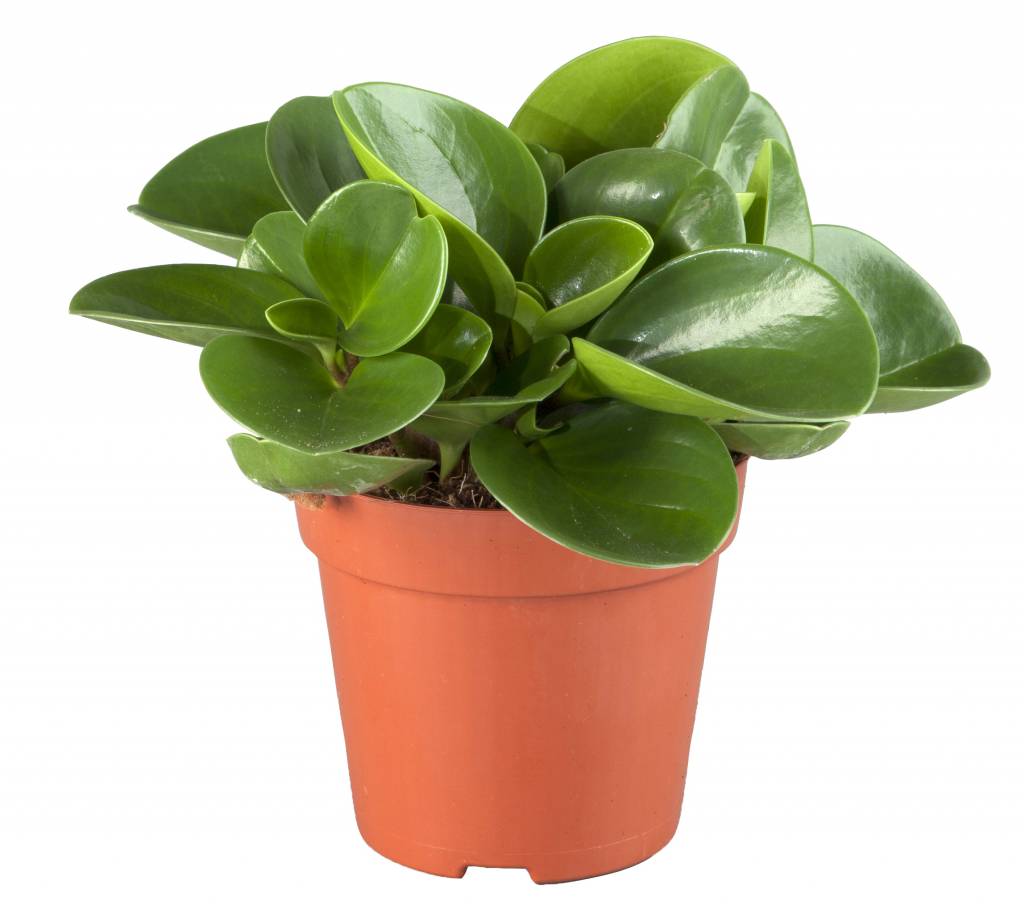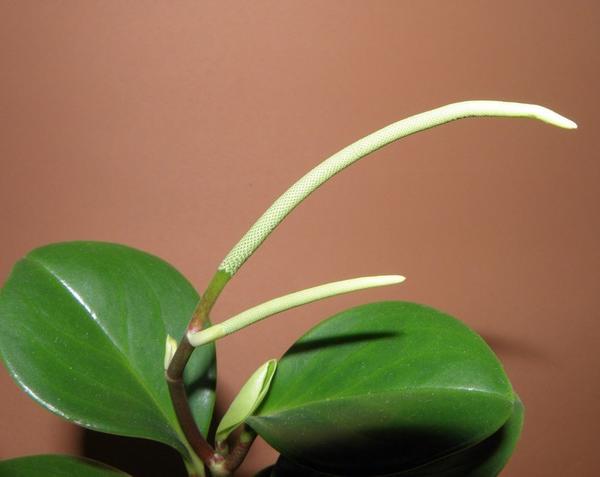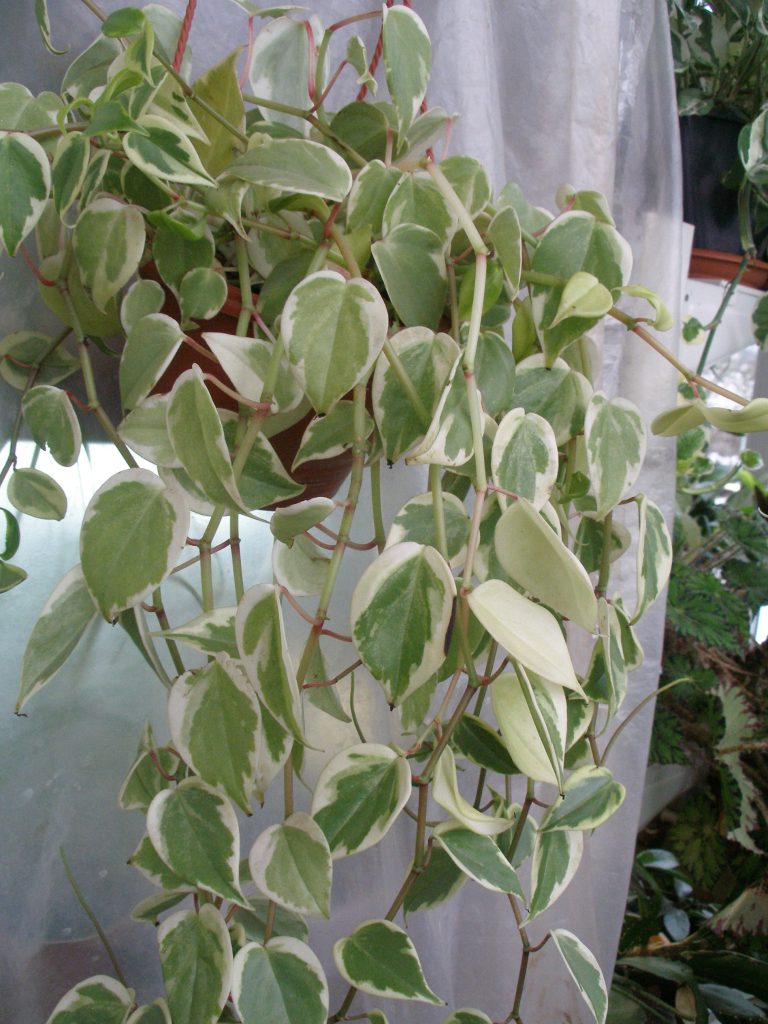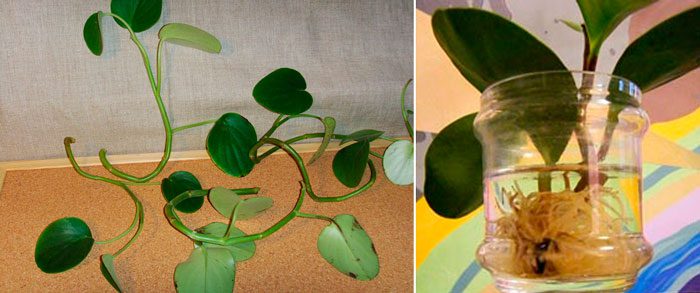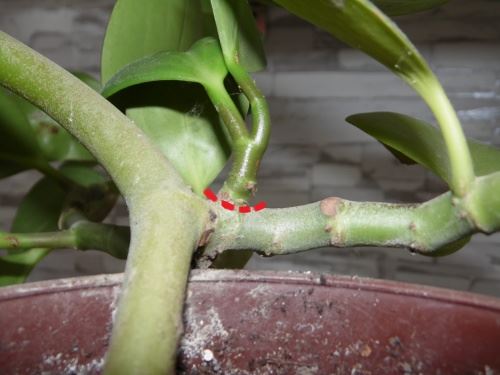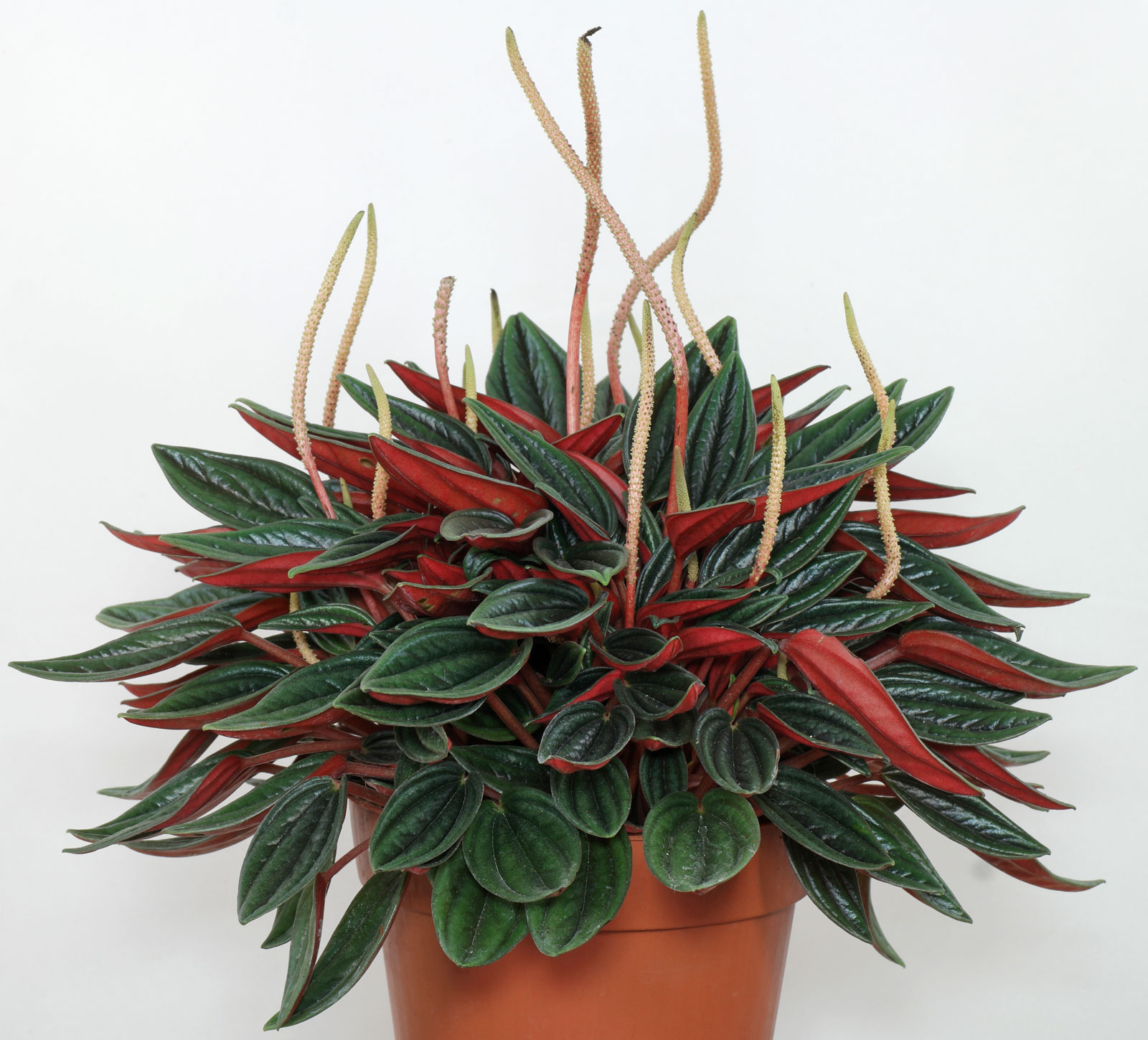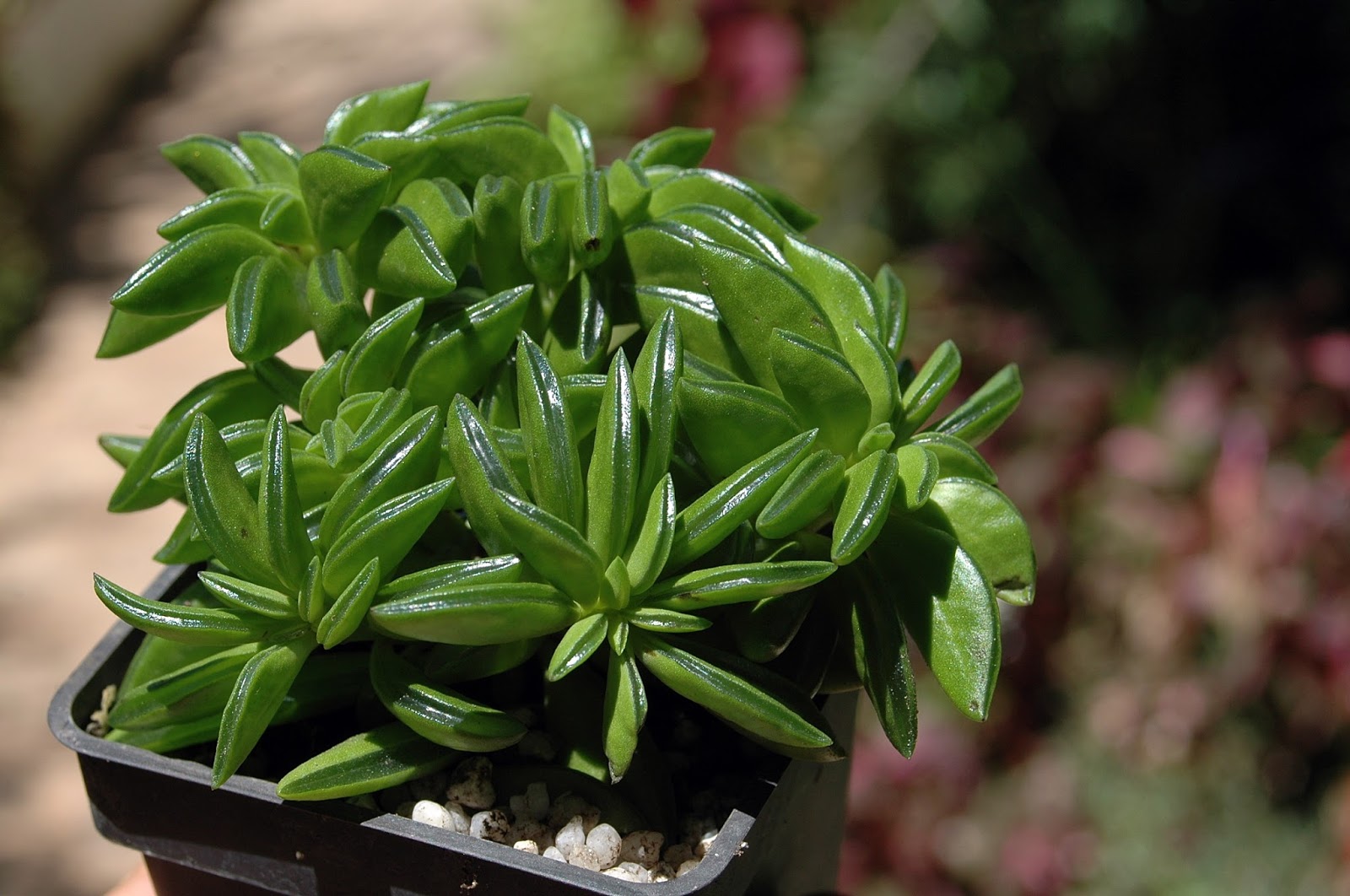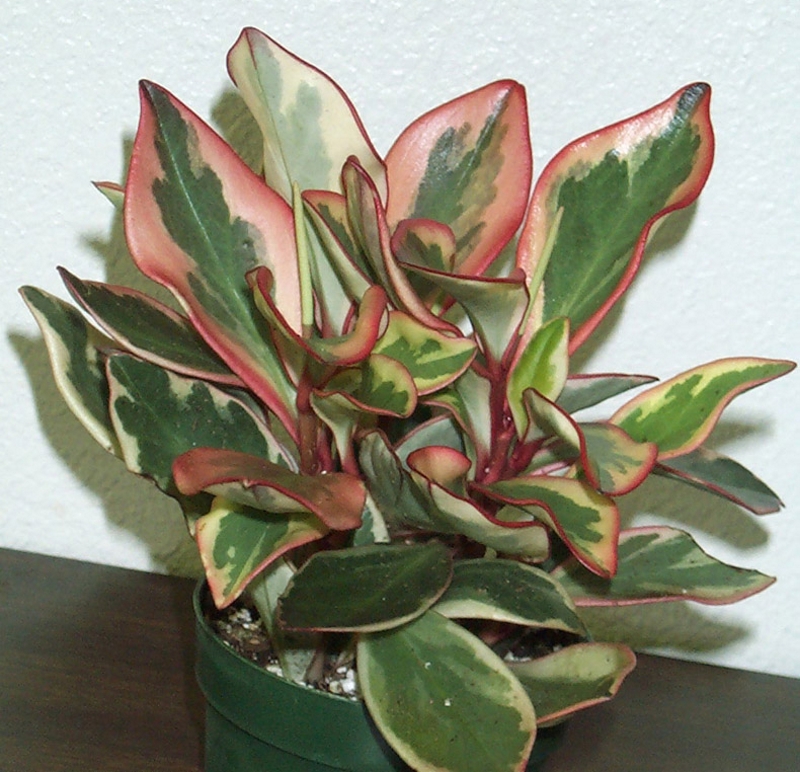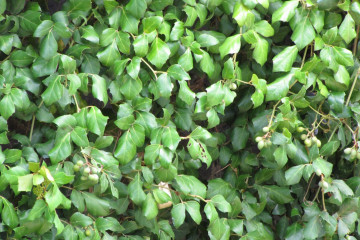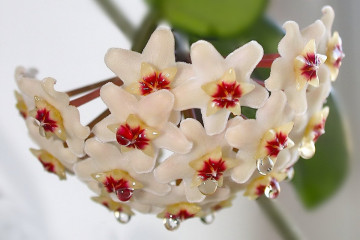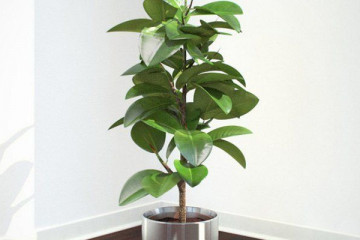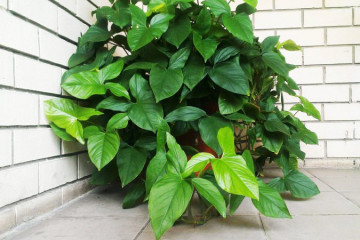Peperomia - Home Care, Reproduction and Disease
Content:
The evergreen peperomia of the Pepper family has about 1000 species. Will look worthy as a stand-alone plant and in a flower arrangement. This is what attracts many florists. This houseplant is unpretentious, but in order to obtain year-round abundant flowering, it is important to know the main nuances of care, methods of reproduction, possible diseases, and the classification of the best types of peperomia.
Peperomia: home care
The plant is easy to breed. Even beginners can provide proper home care. Almost all types of peperomia require identical conditions for watering, feeding, lighting, and temperature conditions. In order for them to climb and reproduce violently, it is important to know the basics of transplantation, as well as what diseases and pests can affect them if they are improperly operated.
Peperomia bloom
The plant blooms in the spring and summer. Although, with proper maintenance, providing abundant watering, it can bloom again at the end of autumn.
The bloom is of little interest as it is humble. Small flowers without a perianth appear, gather in inflorescences like an ear or spikelet. Peduncles must be cut off, as they lead to the depletion of the plant and have no decorative effect. Sometimes it is worth pruning them at the nascent stage so that the peperomia does not shed the leaves after flowering.
Peperomia ampelous
The trumpet variety grows as a herbaceous creeping tree or terrestrial shrub with densely-set leaves on the stems. Peperomia can grow in areas with dense moss litter.
Some species grow in their natural environment as epiphytes:
- Bighead. Leaves are green, glossy, on short petioles. Branched stems are long. It is a valuable ornamental shrub with rapid development.
- Round-leaved. It grows like an epiphyte. The leaves are thick, round, juicy. Branched brown or burgundy shoots. The petioles are short.
- Whorled. Differs in thick, powerful shoots hanging from pots. When blooming, thin green spikelets and small flowers are formed on their tops. Leaves are sessile, rounded, collected in whorls. The plates on the underside are contrasting reddish.
- Angulata is a perennial ampelous shrub similar to Tradescantia. Shoots are thin, juicy, light brown. Leaves are dark green, oblong-lanceolate or with arcuate veins. At the tops of the shoots during flowering, peduncles with greenish spikelets are formed.
Microclimate
The peperomia flower is not pretentious to the microclimate and does not have a particular dormant period. Although it prefers to grow in sunny areas, it is therefore important to provide bright lighting with fluorescent lamps in winter. The main thing is that the rays of the direct sun do not fall on the bushes.
Temperature and humidity
The plant is tropical, therefore it is important to observe the temperature regime for comfortable growth in the room.The optimum temperature throughout the year is 25 ° C. The column should not be allowed to drop below 16 ° C in order to avoid the development of diseases.
Humidity does not matter for peperomia. It will grow well both in arid stuffy apartments and in tropical rainforests. There is no need to spray the bushes, because the water is unlikely to be absorbed and will roll off the glossy leaves. It is enough to wipe them with a damp sponge to remove dust particles.
Illumination
For a plant with leaves of a solid color, it is preferable to create a light shade. Variegated varieties need more light. It is better to grow peperomia on windows facing east, west. But you should not put on the southern windows, otherwise direct sunlight will harm the leaves, up to wrinkling and getting burns.
Irrigation and fertilization schedule
In the warm season, the plant needs regular watering, especially during the growing season. You need to water with soft, settled water at room temperature.
In autumn and winter, at a room temperature of 18 ° C, the frequency of watering should be reduced.
The houseplant is deciduous, so any complex store preparations are suitable for feeding. You can apply mineral fertilizers, feeding 2 times a month in spring, summer, autumn. In winter, once every 4 weeks is enough. It is undesirable to feed the plant at rest. Pinching is also recommended for better branching of the flower stems.
Soil for peperomia
The ideal soil is light, airy, loose, with impeccable water permeability. Composition for soil mixture - 2 parts of leafy earth, humus and sand (1 part each). You can also add the softened hydrogel granules.
The optimum soil acidity is 5.5 to 6.5 pH.
Peperomia: reproduction
How the peperomia flower reproduces:
- Seeds sown in March-April.
- Cuttings using stem or apical processes. A substrate is taken in the composition of humus, sand, peat in equal parts. For rooting, cuttings with 1-3 nodes are selected. After planting in the substrate, the pots are covered with glass, placed in a warm place for rooting for 4 weeks.
- Sheet. Solid leaf plates with a small petiole are selected. To speed up the process, the leaf can be placed in a greenhouse to give roots after 20-30 days.
- The bush. An adult overgrown bush is selected and in the spring it is divided into 2-3 parts. Carefully, without injuring the root system, take a small pot, lay a drainage layer on the bottom. Transplant using a soil mixture composed of sand, peat or sphagnum with moss.
Reproduction of peperomia by a leaf
This is a simple and effective breeding method. Suitable for bush and erect peperomias. A healthy leaf is selected, not injured or painful. The leaf plate is carefully cut off with a sharp knife, a petiole is left at the base 3-4 cm long. Then the leaf is placed in settled water, placed in a warm place. Water is replaced once every 2-3 days. When the stalk gives roots, it can be transplanted into the ground from peat, perlite and sand.
Care consists in regular watering, airing the greenhouse. Babies will appear after 1.5-2 months. As two leaves grow, they can be transplanted into permanent pots up to 5 cm wide.
Propagation of peperomia by cuttings
To obtain a cutting, it is worth pinching off the upper part of the shoot with 1-3 nodes. Then soak in water for several days so that it gives roots. Then plant in the soil, providing greenhouse conditions.
When the stalk takes root, it is worth transplanting it into a glass of earth, put in a warm place in a well-lit place. The air temperature should be 25 ° C. So withstand 1 month, watering periodically, until the seedling grows in size, and the root system is ready for transplanting into a pot.
Diseases and pests of peperomia
If the optimum air humidity is not maintained, then the leaves begin to fall off the plant or turn black with an excess of moisture, insufficient drainage in pots.
Leaves may fade with lack of light or direct sunlight. So low illumination often leads to the loss of their bright attractive color.
The main leaf disease is rust. Thrips, scale insects, mealybugs, spider mites can also infect if the plates begin to wither and lose turgor. Golden nematodes often settle in the roots of the plant, laying yellow round eggs. It is unlikely that such bushes can be saved, so it is wise to destroy them together with the pot.
With improper care, problems often arise with the flower. So that the leaves do not fall off, it is important to irrigate in a timely manner, to prevent the content in the room during temperature changes.
The tops of the leaves turn brown due to drafts or hypothermia. The pots should be in a warm place, and watering should be done with settled water.
Young leaves grow deformed
Leaves grow deformed and wrinkled due to exposure to direct sunlight. Burns on the plates are possible if you hold the flower on the south side of the windowsill.
Why do the leaves turn yellow
The foliage turns yellow, then falls off for two reasons:
- insufficient watering;
- exposure to low temperatures.
Perhaps the soil is dry in a pot, or the room is rather cool.
Popular varieties
The following varieties are in great demand in Russia:
Peperomia Rosso
A semi-shrub, the result of the work of scientific breeders. Grows up to 20-24 cm in height. Leaves are bunches attached to the main stem. The upper part is saturated bright green, facing the sun's rays, the lower one is reddish. Home care for Rosso's peperomia is not particularly difficult.
Peperomia Caperata (Caperata)
An evergreen perennial plant. The leaves of Peperomia (peperomia) Caperata are cordate up to 4 cm long, the stems are reddish or short green. The plates are corrugated, one-piece with deep burgundy veins.When flowering, thin spikelets with small flowers appear.
Peperomia Prostrata
A small mix plant that will look original in pots with a diameter of 5 cm. This is an ornamental variety. Prefers moderate moisture, but light-loving enough. Refers to deciduous culture. Reaches a height of 100 cm, but a rather squat, climbing ampelous plant.
Chisel peperomia
Peresky-leaved succulent with densely sessile leaves on short and thick stems. Visually, the leaf blades look like they are bent in half. Sunlight easily hits the corners of the leaves thanks to the transparent top cut. In summer, short peduncles and inflorescences in the form of panicles with greenish flowers appear on the tops of the shoots.
Peperomia monofilament
Ampel type of creeping peperomia - indoor flower. Will be an excellent decoration for a veranda, window opening. It grows with round leaves of a light green shade, sitting tightly on short petioles. Red thin shoots up to 2 cm in length. Round-leaved peperomia will look like fishnet balls and please the eye. Monotypic peperomia does not have a dormant period, therefore it pleases with its beauty all year round.
Peperomia bushy
It grows in pieces up to 15 cm high. It is formed from leaves in the form of a thick cap. During the flowering period, inflorescences of spikelets appear.
Peperomia graveolens
A bright, attractive, multi-leafed succulent plant with beautiful leaves. The upper surface is light green, the lower is ruby or burgundy. Leaves grow, curling towards the main shoot. Sometimes the flowers of indoor peperomia ficus grow similar to corals.
Peperomia variegated
This flower is found in nature with reddish, beige, dark green, silvery leaves. A variety of clusiform peperomia with original variegated foliage in three colors. Popular flower with dark green color and red-bordered leaves for added expression. The indoor plant is miniature, so it will suit any interior of the house or to create different flower arrangements.
Indoor peperomia (bronze, variegated, Ferreira, bushy, monofilament, Happy) can have many colors and leaf shapes. If you take good care of it, it will definitely become a favorite, will take its rightful place in the collection of home flowers. Moreover, the plant is beneficial, releases phytoncides and disinfects the air in the room. This is important in rooms where children who are often ill live.
